
The challenge: rethinking computer games
In July 2015 I sat together with three fellow students at Café Chaos in Darmstadt. We were discussing topics for our joint Bachelor project. About unsolved problems. About problems not solved well. About the future. We talked a lot, had crazy, good and less good ideas as well. But we all shared a special common ground: we were and are great enthusiasts of connected objects and the Internet of Things. When I saw Ava Kai (a toy for little children) at ThingsCon 2015, I was immediately fascinated by the idea of a simple wooden figure, which suddenly becomes magical by having just a bit of technology inside, enabling it to react on the environment.
Ava Kai inspired our team to look closer at the status quo of "modern playing", and to question it deliberately: Are video games really the zenith of our game culture? Are knobs on controllers all the gaming industry has to offer? And does virtual reality depict an ethically acceptable and secure extension to our current gaming environment?
These questions have led us to rethink video games, to categorically reject screens and virtual reality, and to define our actual world as the stage. We aimed to develop a gaming environment that expands into reality through connected objects, deliberately obscuring the boundaries between gaming and reality. We wanted to prove that reality offers a much higher potential for interaction and play than a constructed reality is and will ever be able to accomplish.
The problem: virtual reality is limited
Before we could take on the huge task of showing an alternative path for virtual realities, we first had to define the main problems of video games and constructed realities. To address this question, we introduced a long research phase. Storytelling has emerged as one of the most important core points.
We learned that in digital computer games, the player takes part as a storyteller as well as a listener: on one hand, he is the one who makes decisions and therefore influences the story; on the other hand, he is still subordinate to the main story of the game developer Since the boundaries of the virtual space of the game limit the players possibilities to influence the story he can be seen as a prisoner in another’s story.
This is because the amount of interaction with and within a virtual reality is limited. Computer systems are not yet capable of reacting adequately to the diversity of human decisions . At the same time players are not able to enter the game’s reality with their whole bodies making it impossible to feel consequences or react on them as you would in real life. Therefore, one of the main problems of most computer games is that they focus on creating a virtual reality and since restrict their own as well as the players potentials and possibilities.
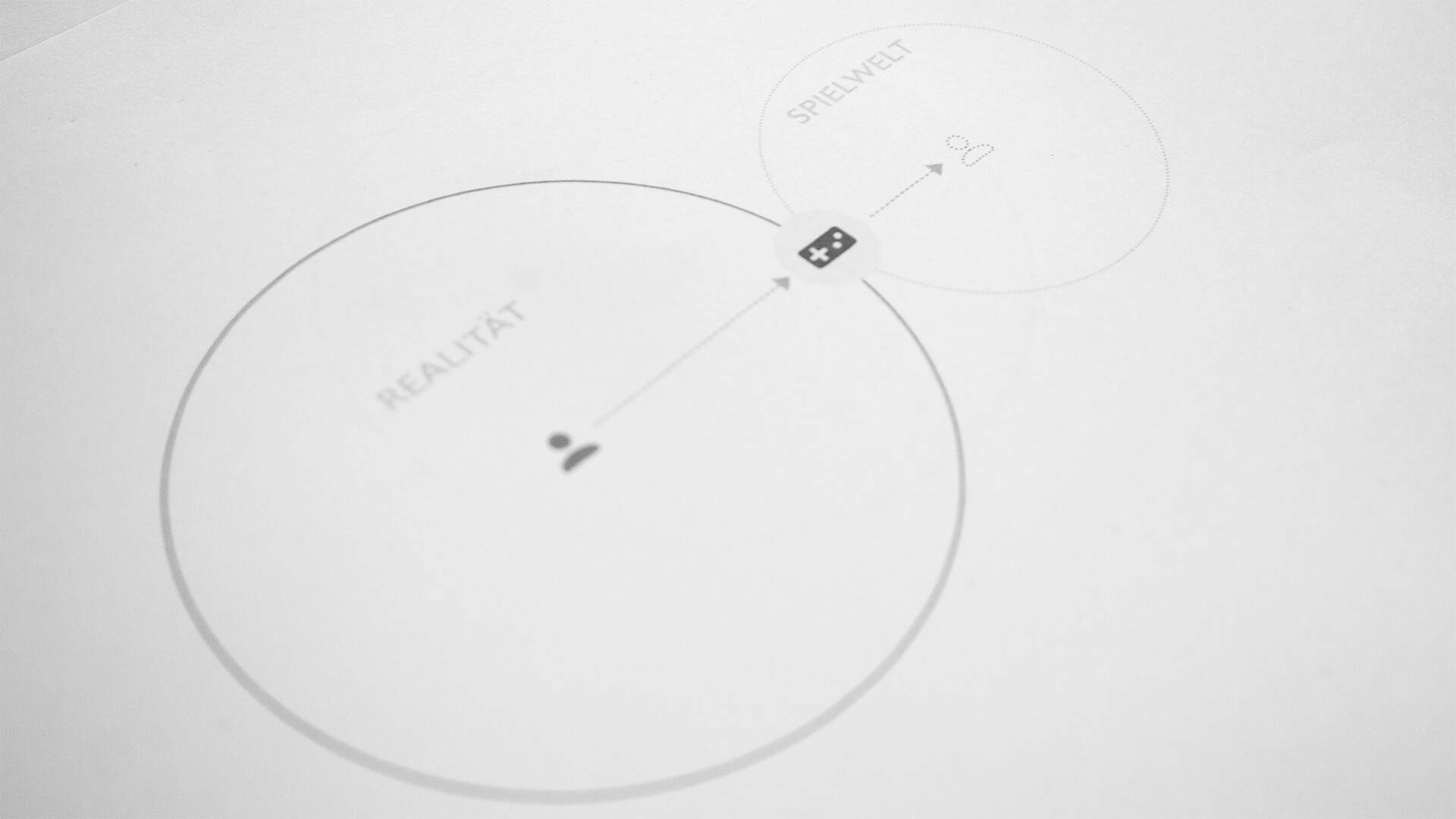
Classical Interface
Diverse types of controllers enable us to interact with the virtual world and thus transport us mentally into the game world.
The solution: expanding reality instead of creating a new one
In order to find a solution to the identified problem, but also to preserve the advantages of virtual worlds, we looked at different types of games. In the process we came across a special genre – the Pervasive Game.
The principle of Pervasive Games can be seen as a suitable approach of combining the advantages of digital games as well as of our reality and in this way enable a new game experience. Pervasive Games create an alternative reality which is closely intertwined with the actual reality of the player through the use of different methods.
The genre basically seems to pursue the same goal as virtual reality does: to take people into another world and enhance them with new abilities. In contrast to virtual reality, Pervasive Games try to do this directly in the actual reality and thus involve unpredictable constants. Thereby the amount of possible interactions is almost infinite. Therefore, we used it as a suitable field for our hypothesis, which states that our physical world offers a better environment for playing and experiencing stories than virtual reality.
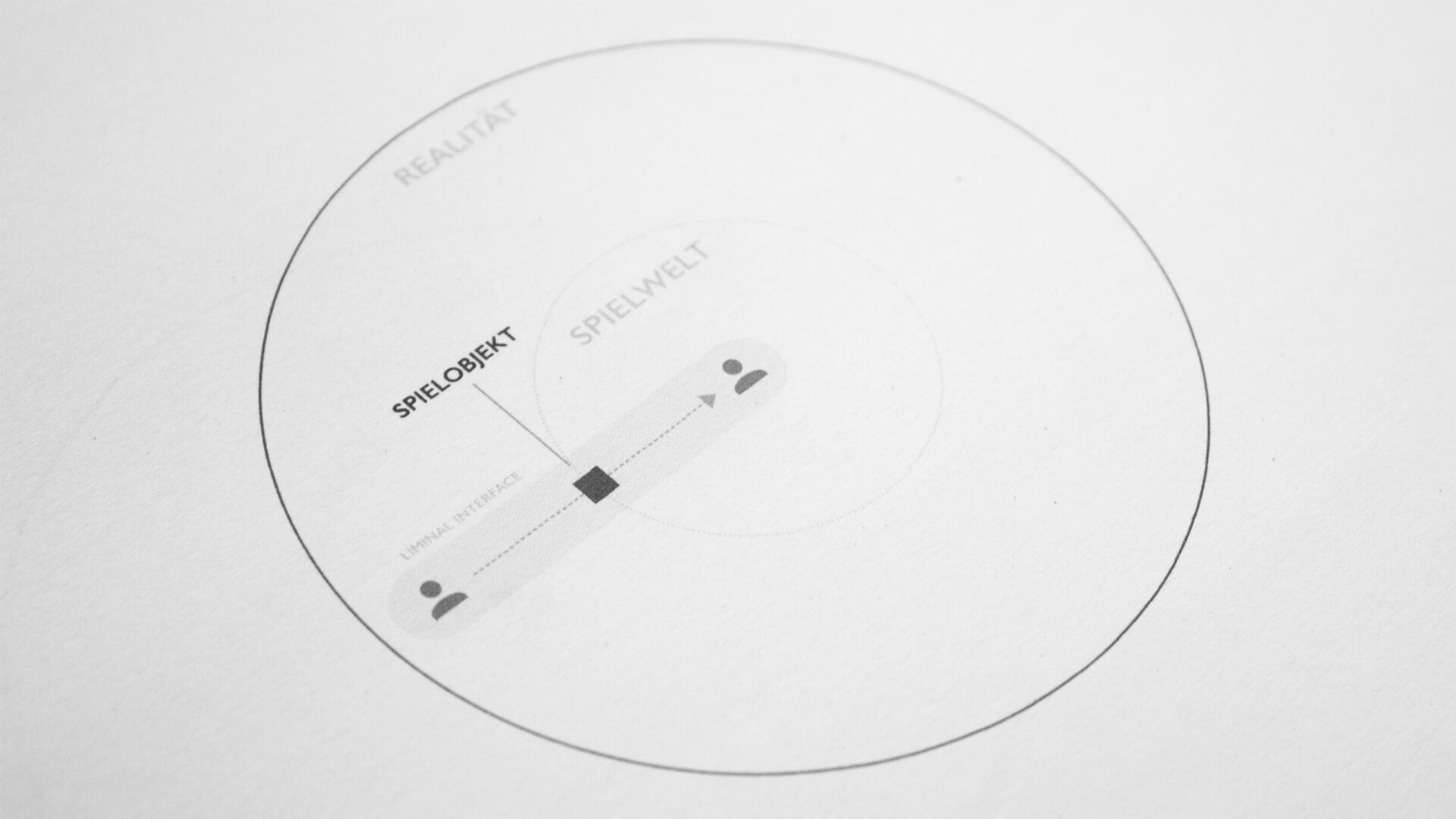
The liminal interface
In Pervasive Games, game objects allow a constant change between the real and the virtual world without leaving the real world physically or mentally.
The narrative world: a believable fiction
In so-called live action role-playing games (LARPs), players are encouraged to play a fictional role. To support the credibility of the participant's play, LARPs strive to ensure that the environment and the embedded narrative world are as convincible as possible.
For UNIT3 we aimed to create a similar experience. But unlike LARPs we wanted the game being able to be played everytime and everywhere, without limiting time and place. Hence UNIT3's narrative world needed to be designed in a way that it can live in symbiosis with our reality.
UNIT3 therefore plays in the present and runs parallel to our actual time. From the perspective of the player it only consists of information fragments that are distributed in the world wide web. All the players know is that a (truly existing) big-data company has discovered evidence of an intelligence that lives in the public network (which is of course fictional). The company is calling on people from all over the world to support the research of the artificial intelligence. For this purpose, special devices are sold which enable people to interact with the discovered intelligence in the public network and to investigate it. Through a software, the volunteer researchers can become part of the global investigation progress.
At the same time though, activists publish information about the mysterious disappearance of a scientist, who discovered the intelligence. They suggest that the company plays a false game and has dubious plans with the artificial intelligence. In the underground, the activists publish hacks and self-made copies of the equipment in order to use the intelligence for finding the truth. Thus, a conflict arises between the two groups which extends the story in an unplanned way.
The game world: the important role of connected objects
The mentioned devices from the narrative world are the most important elements of UNIT3. With them, players are enabled to feel what is only fictional:The artificial intelligence. We are thus able to strengthen the faith in the narrative world and at the same time create a new gaming experience in which the players won't enter a magical circle (like at home on the sofa in front of a TV) but play outside – in a real and unpredictable environment.
In UNIT3, there are three devices that allow the players to assume one of three roles: Echo, Transducer, and Augmentor. As UNIT3 is played in public, the interaction design has been reduced to a minimum, making the affordances very understandable. Nevertheless they are based on well-known mechanics from mini games. The devices communicate with the players almost exclusively through vibration, in order to enable an unobtrusive interaction.
In the game world, the artificial intelligence has spread over the public network and generates computer clusters, where increased activity on the internet (for example, many tweets at one place) can be found. These clusters can be tracked and marked by Echo users. Echo acts similarly to a dowser. If Echo has marked a cluster, it is made visible for the whole team (volunteer researchers or activists). Users of the transducer can now decrypt the cluster. This works according to the principle of lock picking. After decrypting, the Transducer has undertaken the cluster for its own team. It therefore generates computing power for the group to rebuild destroyed files and decipher the mystery of the narrative world. The Augmentor is able to speed up this process by overclocking the cluster.
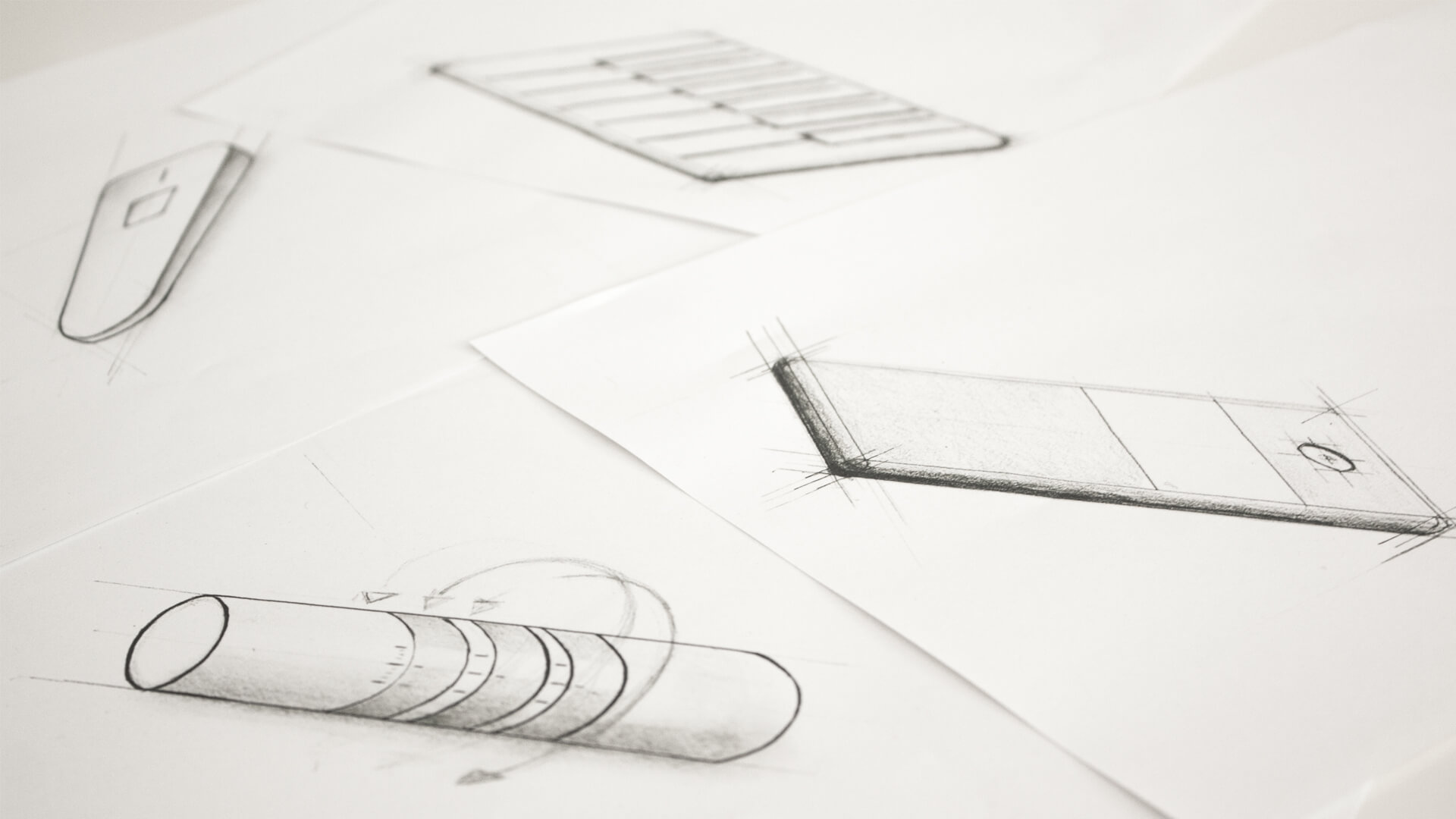
Sketches of our devices
Various designs of our three devices helped us to discuss interactions and try similar shaped objects

Echo
The shape prototype of Echo
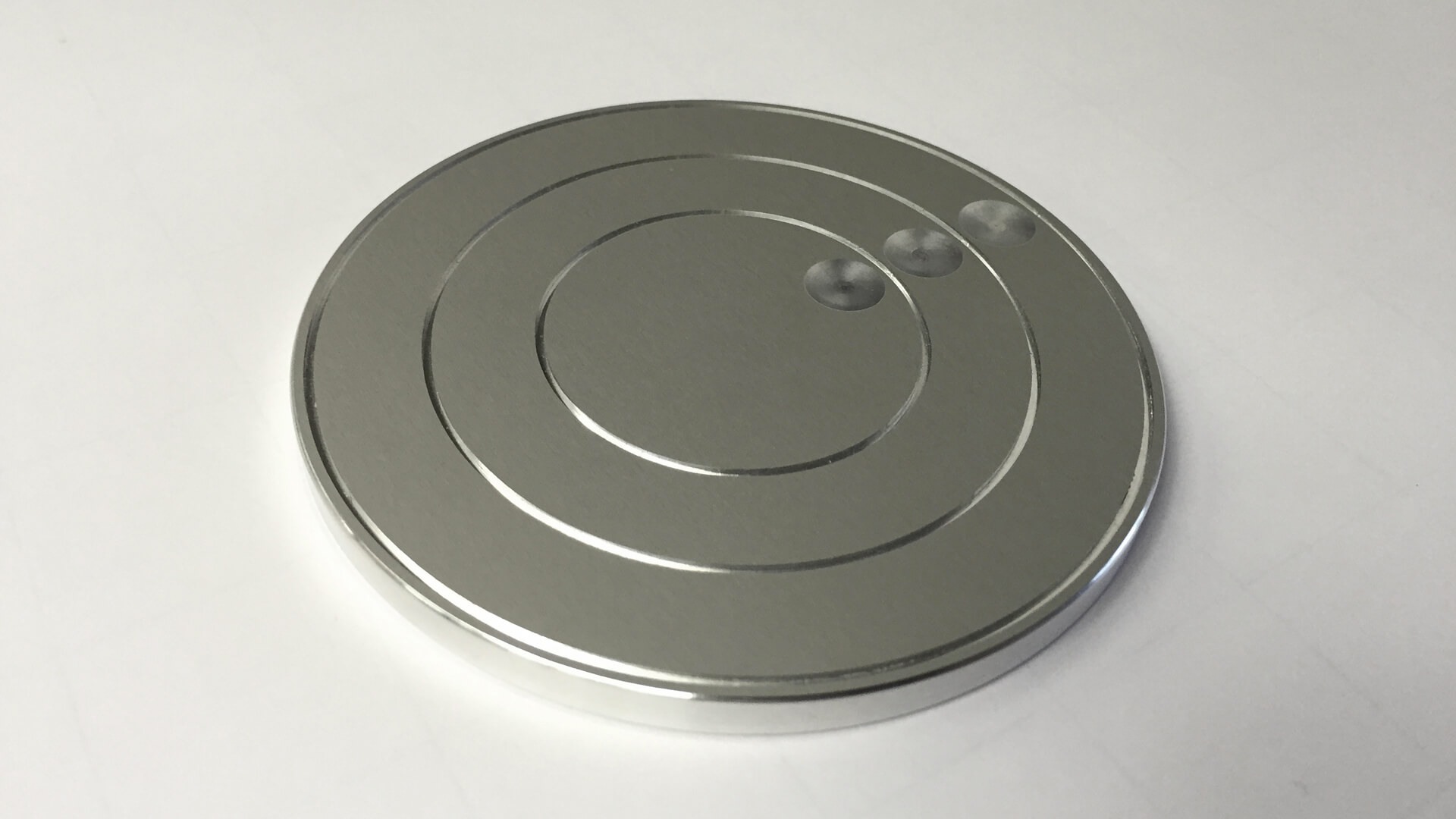
Transducer
The shape prototype of the Transducer

Augmentor
The shape prototype of the Augmentor
It didn't work out without using screens
The conceptual design and embedding of the playing devices into a holistic overall concept turned out to be a difficult task. We had a (theoretically) functioning narrative world, functioning game mechanics, functioning game objects and a rule system. But how could we inform the players about their progress as well as notify them about new elements of the narrative world?
Our solution included a software that we embedded into the narrative world. It acts as a virtual research center. If the players connect one of the devices with their computer, they are able to access the "Gate". “Gate” represents neutral and captured clusters on a map, serving players to see what they have achieved in the last game sessions and understand what they have recently done in the alternate reality. They can also monitor how destroyed files are reconstructed by the clusters they have undertaken in real time. It allows players to actively participate in the game, reacts to unexpected situations with narrative components, and can incorporate new game elements, if needed.
The prototype: Three devices, three forms, one web application
In order to make our concept tangible, we have developed functional prototypes with in order to test the basic game mechanics. For this, it was necessary to develop all three devices and their underlying interaction. We used a Spark Core in each device enabling easy connectivity with the cloud. In addition to the respective actuators and sensors, Echo was also equipped with a GPS sensor to test searching and finding of clusters in outdoor environments.
When used, the devices communicate with a web server, which generates clusters in a defined space. These are displayed on a map in the gate prototype and change their appearance as soon as Echo is positioned at the cluster's site and a specific interaction was carried out the user. Not till then the Transducer gets activated and can be used to decrypt the cluster. (The pattern for this is randomly set at each play session. Finally, the Augmentor can set a highscore by playing a vibrational sequence which increases complexity in every round. The highscore is sent to the web server afterwards.
In addition to the technical prototypes, we have collaborated with industrial designers to produce aluminum prototypes. These were designed with the objective of creating forms and sizes which convey an appealing feeling and correctly perceiving affordances.
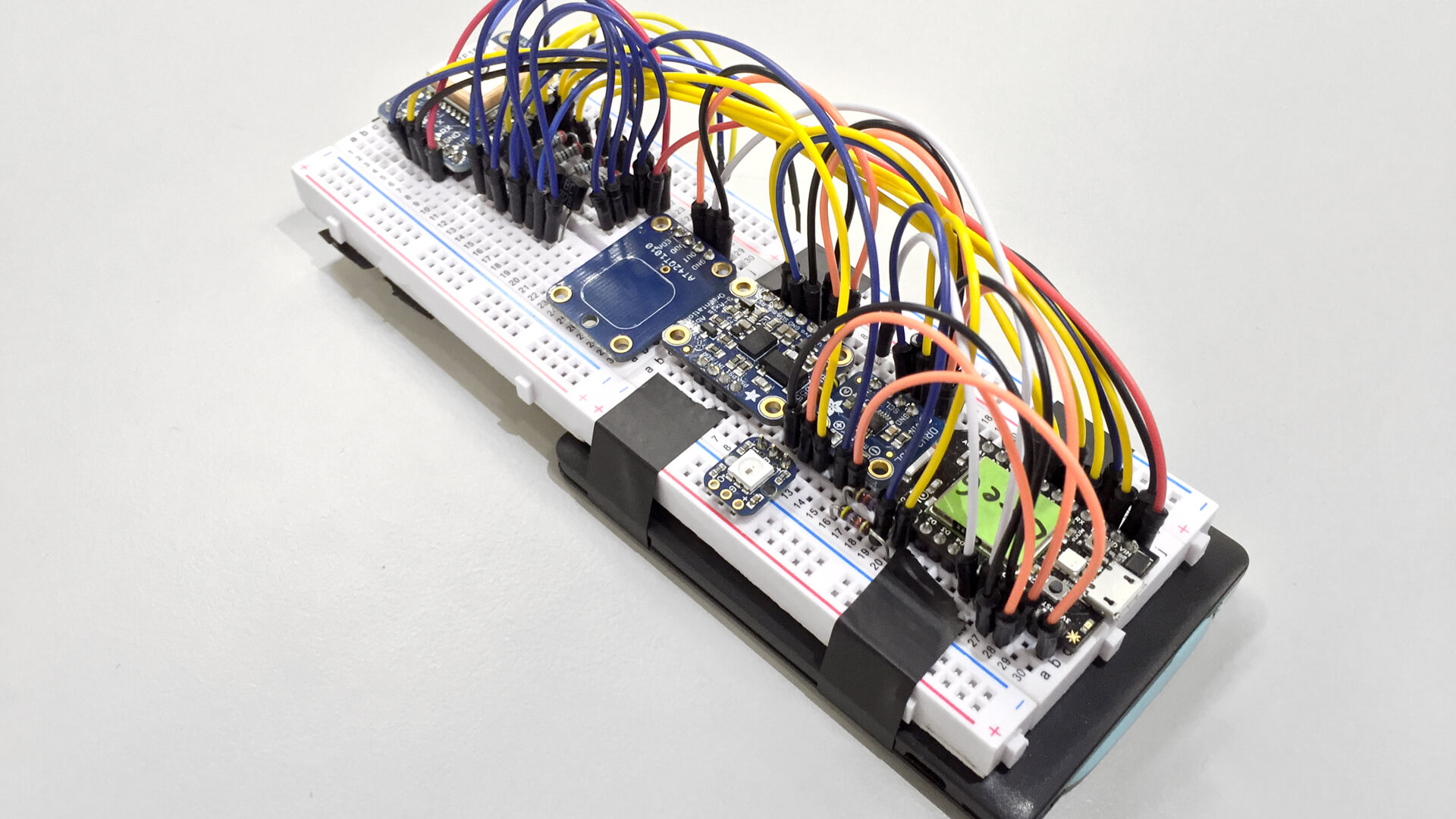
Echo Prototype
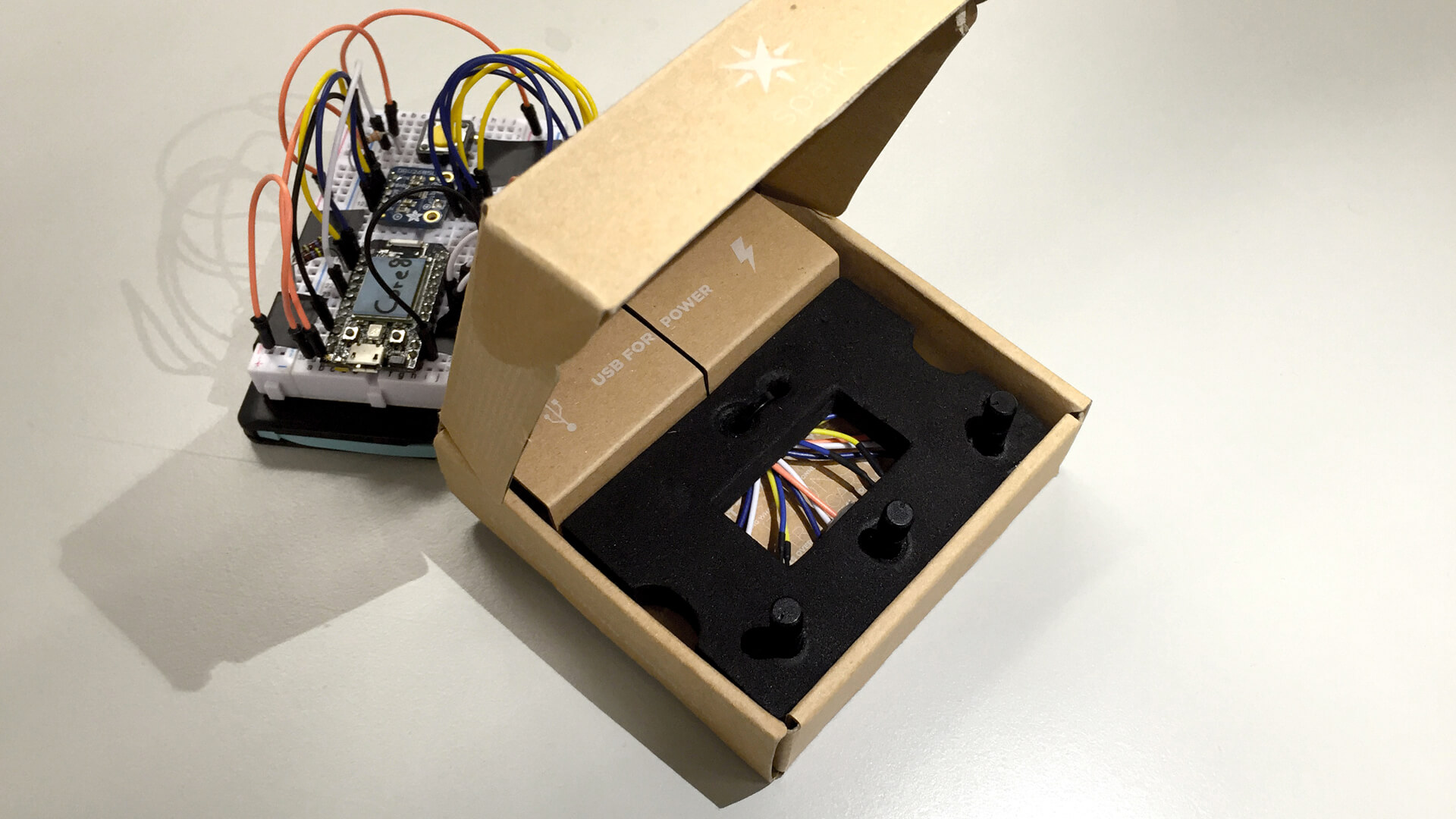
Transducer Prototype
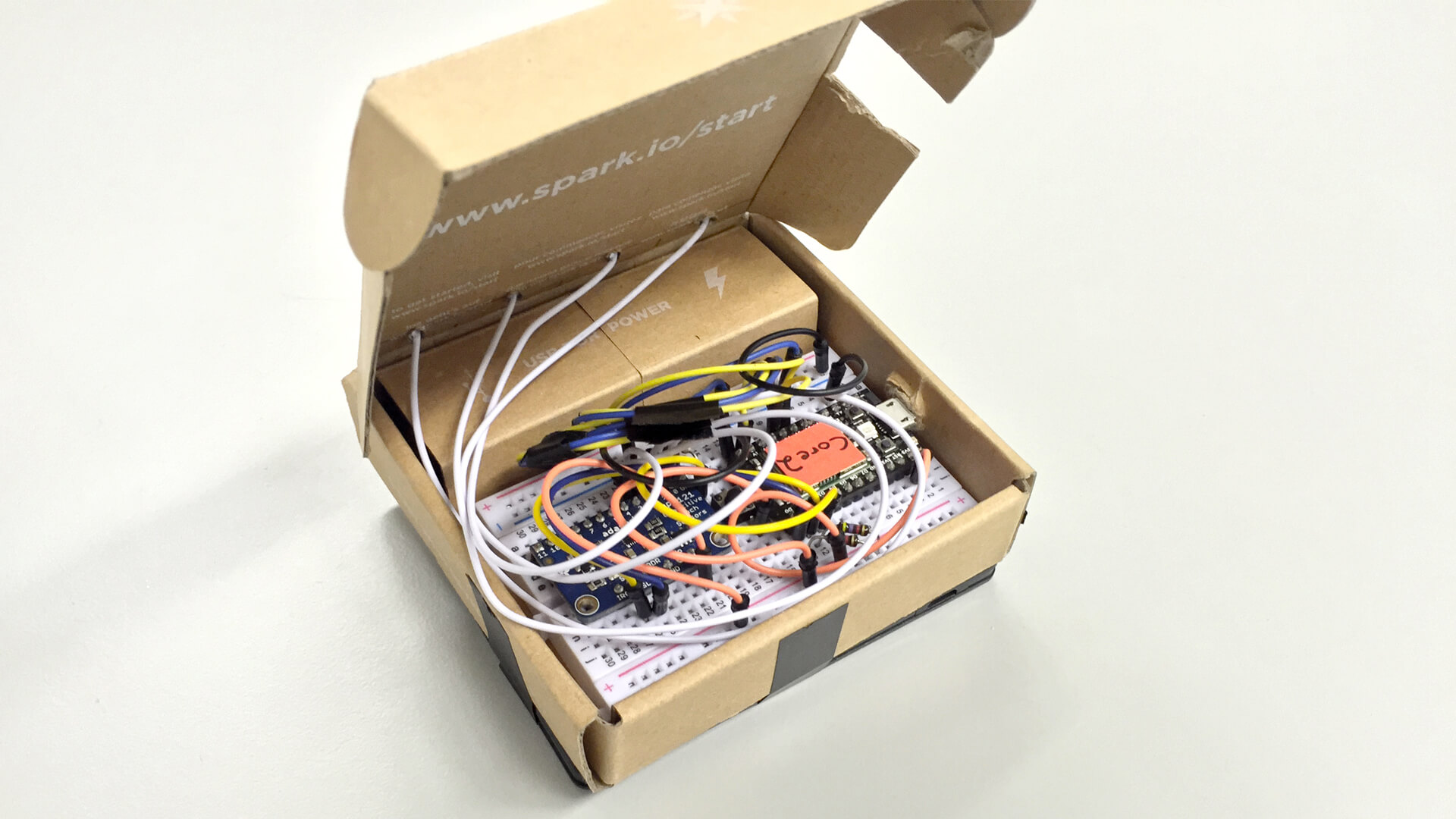
Augmentor Prototype
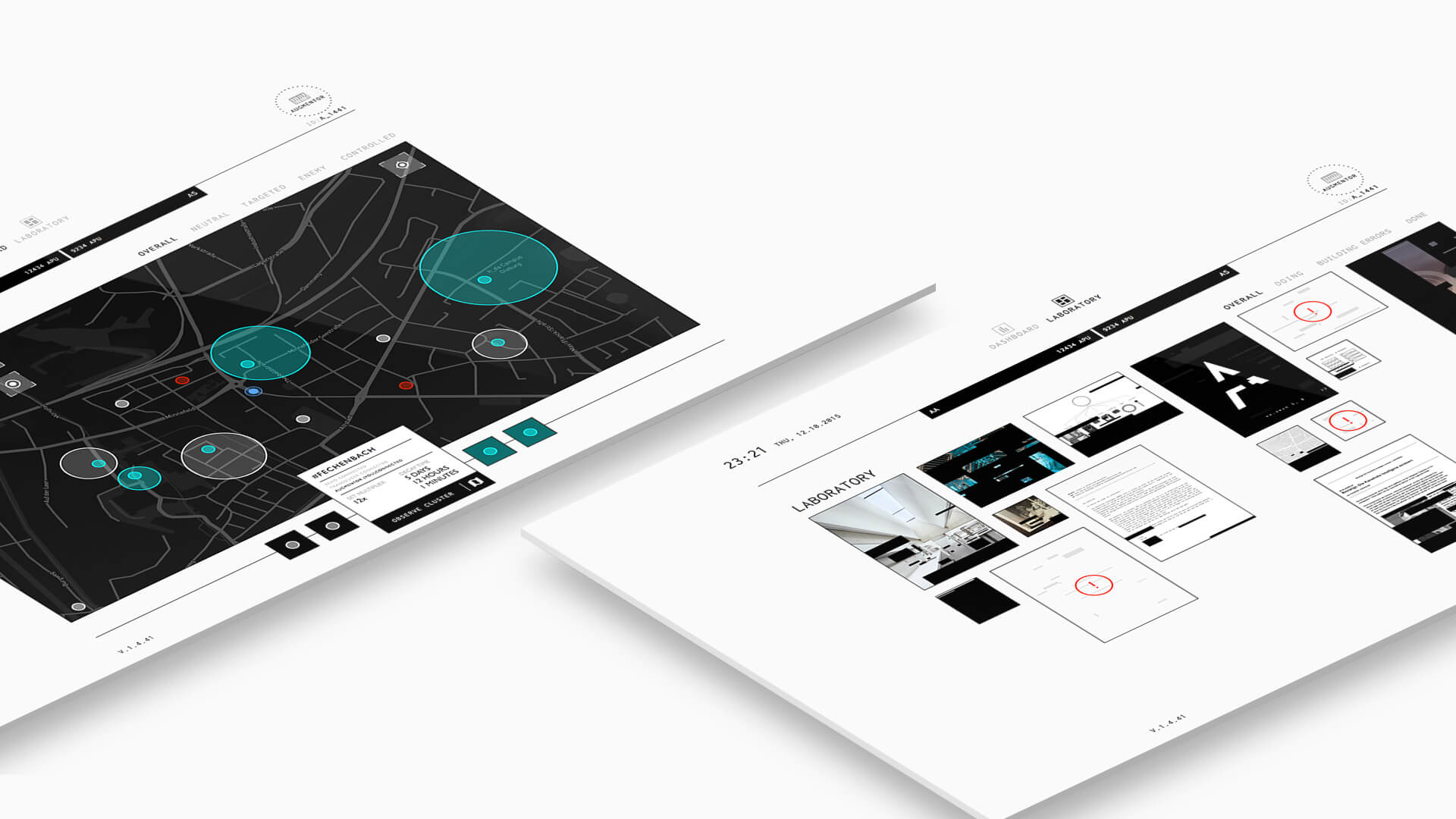
Visual Design of Gate
Gate has a compelling sci-fi look, which was made to fit the narrative world it is embedded in.
Concluding words
When designing UNIT3 we aimed for expanding virtual game worlds into the realms of our physical world through connected objects and thus creating a "real virtuality". Thereby we wanted to show that the technical limitations of virtual worlds can hinder people in their amount of interaction and influence, and that the physical world is a better environment for playing and experiencing stories. Due to the limited period of three months, we weren’t able to prove our assumption completely. Nevertheless we could demonstrate the existence of a potential alternative to virtual realities with UNIT3.
However some effort was necessary to teach the potential players to interact with the narrative world without focusing on screens. Classical narrative elements moved into the gate and the approach of transforming the player into an author became a central feature. Nonetheless it got inevitable that players use displays to exchange and share their version of the story. This may be because screens are used inflationary in our world nowadays. During the course of the project we understood that there is no sense in stubbornly foregoing screens Nevertheless the project led us to rethink digital games and give them the opportunity to break out of their quadratic frameworks. Technology allows us to create completely new game concepts by "enchanting" real objects with software, actuators and sensors. In this way, modern interesting game concepts could be created which integrate the environment, external objects as well as the players themselves into the game.